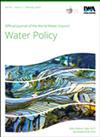Water quality for citizen confidence: The implementation process of 2020 EU Drinking Water Directive in Nordic countries
IF 1.5
4区 环境科学与生态学
Q4 WATER RESOURCES
引用次数: 0
Abstract
The European Union Drinking Water Directive aims to protect human health and promote safe water consumption. The 2020 revision, Article 17 in particular, directed member states to provide public access to information on drinking water. This update was a response to citizen initiatives calling for the active participation of end-users in water services and greater transparency from water utilities. Difficulties implementing previous versions of the directive have highlighted divergences between policy purposes, local capacity to implement, and public response. These divergences are explored within eight case studies in Nordic countries and analysed using the policy implementation framework. We employed a mixed-method, multi-stage approach. Policy formulation was characterized through a literature review, policy design by the synthesis of legislative instruments, and policy implementation via an analysis of delivery behaviour based on interviews. We identified the main drivers of the directive's update and contrast these with the ongoing implementation process in the countries of study. Our results point to a differential and highly contextual implementation, which differs from the primary drivers of the policy update, namely, the establishment of public confidence in water services.以水质取信于民:北欧国家实施 2020 年欧盟饮用水指令的过程
欧盟饮用水指令》旨在保护人类健康,促进安全用水。2020 年的修订,特别是第 17 条,指示成员国向公众提供饮用水信息。这一更新是对公民倡议的回应,公民倡议要求最终用户积极参与供水服务,并要求供水公司提高透明度。以往版本的指令在实施过程中遇到的困难凸显了政策目的、地方实施能力和公众反应之间的差异。我们在北欧国家的八个案例研究中探讨了这些分歧,并利用政策实施框架进行了分析。我们采用了一种多阶段的混合方法。政策制定的特点是文献综述,政策设计的特点是法律文书的综合,政策实施的特点是基于访谈的实施行为分析。我们确定了指令更新的主要驱动因素,并将其与研究国家正在进行的实施过程进行了对比。我们的研究结果表明,政策的实施与政策更新的主要驱动因素--即建立公众对供水服务的信心--不同,且具有很强的背景性。
本文章由计算机程序翻译,如有差异,请以英文原文为准。
求助全文
约1分钟内获得全文
求助全文
来源期刊

Water Policy
环境科学-水资源
CiteScore
3.10
自引率
12.50%
发文量
81
审稿时长
6-12 weeks
期刊介绍:
Water Policy will publish reviews, research papers and progress reports in, among others, the following areas: financial, diplomatic, organizational, legal, administrative and research; organized by country, region or river basin. Water Policy also publishes reviews of books and grey literature.
 求助内容:
求助内容: 应助结果提醒方式:
应助结果提醒方式:


